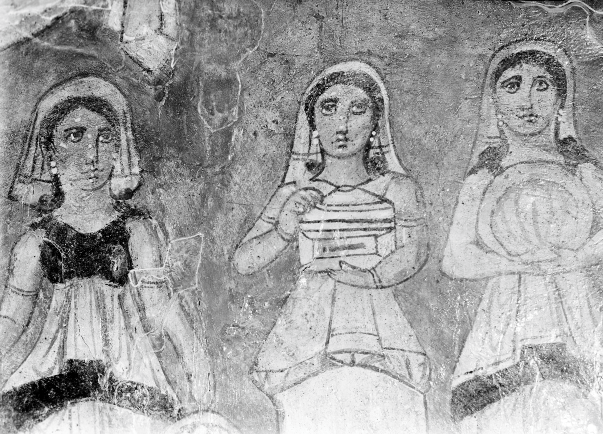
Photographs of Dura-Europos: 1922 – 2022 and Onward
Welcome to the online exhibition!
The exhibition connects the past, present, and future of research on Dura-Europos, Syria, and forms part of Yale’s centennial commemoration of the Yale-French Excavations. The contribution of Dura-Europos to our understanding of cultural diversity and religious life in the ancient Middle East is extraordinary. Houses renovated for use as a synagogue and a Christian building are among the nineteen religious buildings that have been excavated, providing us with a remarkable glimpse of the coexistence of polytheists and monotheists in the middle of the third century.
In about 256, Dura-Europos fell to the Sasanian Empire during an invasion, and the defensive earthen rampart that had been built against one of the city walls ended up preserving the synagogue, Christian building, Mithraeum, and multiple other structures in a remarkable microclimate. Located on the Euphrates River, the city had been a critical military outpost on the eastern frontier of the Roman Empire since about 165, and was previously under the control of the Parthian (Arsacid) Empire since the late second or early first century B.C.E. Two centuries earlier, during the Seleucid period, Macedonian military settlers founded the colony “Europos” at the site with plots of land organized according to a grid pattern, and a cuneiform tablet inscribed with an earlier form of the name “Dura” (fortress) suggests that there was a much earlier settlement.
Ten seasons of excavations sponsored by Yale and the Académie française des inscriptions et belles-lettres took place between 1928–1937 under the direction of Mikhail Rostovtzeff, following the French excavations led by Franz Cumont from 1922-1924. The project was one of the so-called “big digs” in the Middle East during the interwar period when Syria was under the control of the French Mandate and Syrian workmen formed a critical labor force who excavated an enormous site under extremely challenging conditions.
The wall paintings, papyri, sculptures, and other objects discovered during the excavations are located primarily in the National Museum of Damascus, the Musée du Louvre, and at Yale. Currently, the Yale Digital Dura-Europos Archive (YDEA) is using the power of Linked Open Data (LOD) to reassemble and re-contextualize archaeological data and archival material. The approximately 5,000 photographs from the Yale-French Excavations in the archive of the Yale University Art Gallery have been digitized and are accessible online. The selection of archival photographs on view in this exhibition illustrate how such images played a key role not only in documentation but also in the promotion of the project, since many were sent from Syria to Yale to help procure funding by highlighting outstanding discoveries.
The extensive looting that has occurred at Dura-Europos since the conflict in Syria began in 2011 is closely connected to the ongoing devastating humanitarian crisis there. Satellite images that document this destruction are included in the exhibition, fostering broad discussion of threats to archaeological sites worldwide, and underscoring the importance of current and future digital preservation efforts, new research projects on legacy collections from early excavations, and open accessibility to archival material.
Please follow the sequence of the exhibition in the sidebar, and we hope you enjoy your virtual visit!
Image credit: Field photograph of Synagogue wall panel WC4 (Pharaoh and the infancy of Moses, Exodus 1-2), detail of three women. YUAG, Dura-Europos Collection, negative number dam-259~01